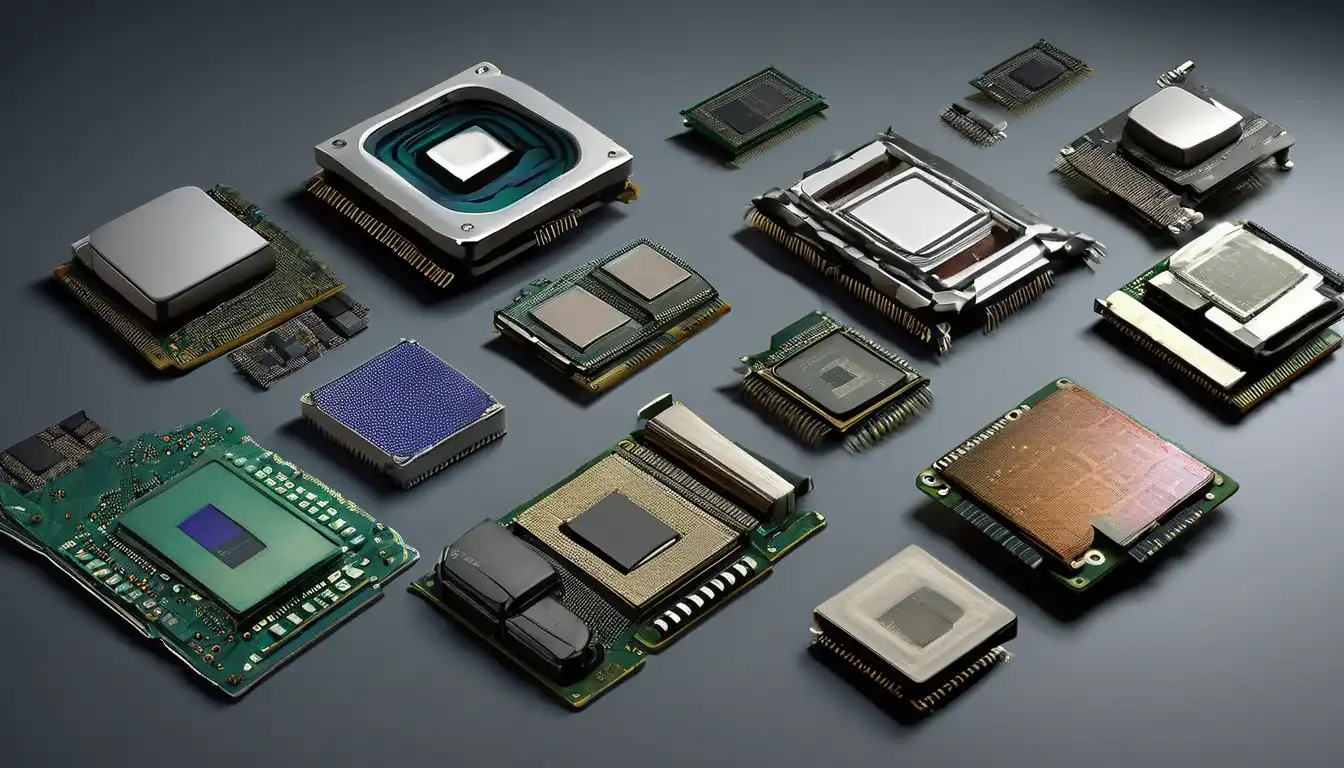The Dawn of Computing: Early Processor Beginnings
The evolution of computer processors represents one of the most remarkable technological journeys in human history. From room-sized machines with limited capabilities to today's microscopic powerhouses, processor development has fundamentally transformed how we live, work, and communicate. The story begins in the 1940s with the first electronic computers that used vacuum tubes as their primary processing components.
These early processors, such as those in the ENIAC computer, contained approximately 17,000 vacuum tubes and occupied an entire room. Despite their massive size, they operated at speeds measured in kilohertz and could perform only basic calculations. The transition from mechanical to electronic processing marked the first major milestone in processor evolution, setting the stage for decades of rapid innovation.
The Transistor Revolution
The invention of the transistor in 1947 by Bell Labs engineers John Bardeen, Walter Brattain, and William Shockley marked a pivotal moment in processor history. Transistors replaced bulky vacuum tubes, offering smaller size, lower power consumption, and greater reliability. This breakthrough enabled the development of second-generation computers in the late 1950s that were more practical for commercial and scientific applications.
By the early 1960s, integrated circuits emerged, allowing multiple transistors to be fabricated on a single silicon chip. This integration dramatically increased processing power while reducing costs and physical size. The IBM System/360, introduced in 1964, became one of the first commercially successful computers to utilize integrated circuit technology, demonstrating the practical benefits of this new approach to processor design.
The Microprocessor Era Begins
The true revolution in processor evolution occurred in 1971 when Intel introduced the 4004, the world's first commercially available microprocessor. This 4-bit processor contained 2,300 transistors and operated at 740 kHz, representing a monumental leap in integration and accessibility. The 4004 demonstrated that complex processing capabilities could be packaged into a single chip, paving the way for the personal computer revolution.
Throughout the 1970s, processor technology advanced rapidly with the introduction of 8-bit microprocessors like the Intel 8080 and Motorola 6800. These chips powered the first generation of personal computers and embedded systems, making computing power accessible to businesses and hobbyists alike. The development of these early microprocessors established fundamental architectural principles that continue to influence modern processor design.
The x86 Architecture Dominance
Intel's 8086 processor, introduced in 1978, established the x86 architecture that would dominate personal computing for decades. This 16-bit processor featured 29,000 transistors and addressed up to 1MB of memory, representing a significant performance improvement over previous designs. The x86 architecture's backward compatibility became a key factor in its long-term success, allowing software investment to be preserved across generations.
The 1980s witnessed the rise of competition in the processor market, with companies like AMD developing compatible x86 processors. This competition drove innovation and price reductions, making personal computers increasingly affordable. The introduction of 32-bit processing with Intel's 80386 in 1985 further expanded processing capabilities, enabling more sophisticated operating systems and applications.
The Performance Race: Clock Speed and Parallel Processing
During the 1990s, processor evolution focused heavily on increasing clock speeds and implementing parallel processing techniques. The transition from hundreds of megahertz to multiple gigahertz represented one of the most visible aspects of processor advancement. Intel's Pentium processors and AMD's competing offerings pushed performance boundaries while introducing important architectural improvements like superscalar execution and branch prediction.
The late 1990s saw the emergence of multi-core processors, beginning with IBM's POWER4 in 2001. This approach addressed the physical limitations of increasing clock speeds by dividing processing tasks across multiple execution cores. Multi-core architecture represented a fundamental shift in processor design philosophy, emphasizing parallel processing over raw clock speed increases.
The Mobile and Low-Power Revolution
As mobile computing gained prominence in the 2000s, processor evolution shifted toward power efficiency and thermal management. ARM architecture processors, designed specifically for low power consumption, became dominant in smartphones and tablets. This represented a significant departure from the performance-focused x86 paradigm, demonstrating how processor evolution adapts to changing market needs and technological constraints.
The development of system-on-chip (SoC) designs integrated multiple components—including CPU, GPU, memory controller, and I/O interfaces—onto a single die. This integration enabled the compact, power-efficient devices that define modern mobile computing. Apple's A-series processors and Qualcomm's Snapdragon chips exemplify this approach, delivering desktop-class performance in handheld devices.
Modern Processor Innovations
Contemporary processor evolution focuses on heterogeneous computing, artificial intelligence acceleration, and specialized processing units. Modern processors incorporate dedicated AI processors, neural processing units (NPUs), and advanced graphics capabilities to handle increasingly diverse computational workloads. The integration of machine learning acceleration directly into processor architectures represents the latest frontier in performance optimization.
Process node shrinkage continues to drive performance improvements, with current manufacturing processes reaching 3nm and smaller features. However, physical limitations are prompting exploration of alternative materials like gallium nitride and innovative architectures such as chiplet designs. These approaches distribute functionality across multiple specialized dies connected through advanced packaging technologies.
Future Directions and Quantum Computing
The future of processor evolution points toward quantum computing, neuromorphic architectures, and photonic processing. Quantum processors leverage quantum mechanical phenomena to solve problems intractable for classical computers, while neuromorphic chips mimic the brain's neural structure for efficient pattern recognition. Photonic processors use light instead of electricity for potentially faster, lower-power computation.
As classical processor evolution approaches physical limits, these alternative computing paradigms may define the next major phase of computational advancement. The ongoing research in materials science, including graphene and other two-dimensional materials, suggests that processor evolution will continue to surprise us with innovative solutions to computational challenges.
The journey from vacuum tubes to modern multi-core processors demonstrates remarkable technological progress. Each generation built upon previous innovations while addressing new challenges and opportunities. As we look toward the future, the evolution of computer processors continues to shape our technological landscape, enabling new applications and transforming how we interact with information.
